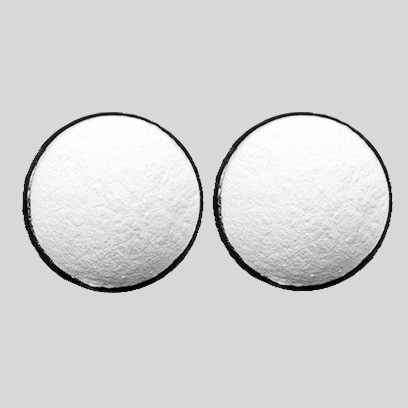
Novemba . 26, 2024 21:17 Back to list
Exploring the Properties and Applications of Mixed Crystal Nano Titania Materials
Mixed Crystal Nano Titania Properties, Synthesis, and Applications
Titanium dioxide, or titania, has garnered significant attention in recent years due to its exceptional photocatalytic properties, which can be enhanced through the formation of mixed crystal structures. Mixed crystal nano titania, consisting of anatase and rutile phases, exhibits unique characteristics that make it suitable for various applications, particularly in environmental remediation and energy conversion.
Properties of Mixed Crystal Nano Titania
Mixed crystal nano titania demonstrates a combination of properties derived from its two crystal structures. The anatase phase is known for its high surface area and superior photocatalytic activity, while the rutile phase is more thermally stable and exhibits higher electron mobility. When these two phases are combined at the nanoscale, the resulting material benefits from the critical properties of both structures. This synergy results in enhanced photocatalytic efficacy, improved charge separation, and reduced recombination of electron-hole pairs, leading to much more efficient photocatalytic reactions.
Furthermore, the mixed-phase approach can also modulate light absorption properties due to the different bandgap energies of anatase (~3.2 eV) and rutile (~3.0 eV). By fine-tuning the ratio of these phases, researchers can create titania materials that are sensitive to both UV and visible light, expanding their applicability in real-world scenarios.
Synthesis of Mixed Crystal Nano Titania
The synthesis of mixed crystal nano titania can be approached through various methods, including sol-gel processes, hydrothermal synthesis, and flame spray pyrolysis.
1. Sol-Gel Method This method involves the transition of a solution (sol) into a solid (gel) phase. By controlling the precursor materials, reaction conditions, and calcination temperatures, researchers can obtain mixed phases of titania. Utilizing different titanium alkoxides and introducing dopants can further enhance the phase control.
2. Hydrothermal Synthesis By conducting reactions under high temperature and pressure in an aqueous environment, hydrothermal synthesis allows for the formation of nano-sized titania crystals with tailored properties. Adjustments in pH, temperature, and the presence of surfactants can influence the phase composition.
3. Flame Spray Pyrolysis In this technique, precursor solutions are atomized and injected into a flame, resulting in rapid evaporation and subsequent crystallization. This process enables the production of high-purity and uniform nanoparticles, which can possess both anatase and rutile phases.
mixed crystal nano titania

Each of these methods allows for the systematic control of particle size, morphology, and phase composition, thereby facilitating the design of titania with specific properties for targeted applications
.Applications of Mixed Crystal Nano Titania
The unique properties of mixed crystal nano titania make it a versatile material in numerous fields
1. Photocatalysis One of the most celebrated applications of titania is its use in photocatalytic water purification and air treatment. The enhanced photocatalytic activity resulting from the mixed phases allows for more effective degradation of organic pollutants under UV and visible light.
2. Solar Energy Conversion In the realm of solar cells, mixed crystal nano titania is used as a semiconductor in dye-sensitized solar cells (DSSCs). The ability to absorb broader wavelengths and the high charge mobility can improve the efficiency of energy conversion processes.
3. Self-Cleaning Surfaces Utilizing the photocatalytic properties of mixed crystal nano-titania makes it an ideal candidate for self-cleaning coatings. When exposed to light, these coatings can decompose organic materials, keeping surfaces clean without the need for chemical cleaners.
4. Biomedical Applications Recent studies have suggested the potential of mixed crystal nano titania in biomedical fields, including drug delivery and tissue engineering. Its biocompatibility and photocatalytic properties might be harnessed for improving therapeutic efficacy and reducing infections.
5. Environmental Remediation The application of this material in environmental technologies for pollutant degradation, carbon dioxide reduction, and other green technologies emphasizes its role in addressing pressing global challenges.
Conclusion
Mixed crystal nano titania stands at the forefront of advanced material science, bridging the gap between fundamental research and practical applications. By harnessing its unique properties, scientists are paving the way for innovative solutions in environmental sustainability, energy efficiency, and beyond. Continued exploration of the synthesis parameters and phase relationships will undoubtedly unveil even more utility for this remarkable material in the future.
-
High Quality TiO2 for Superior Performance - Reliable Supply & Purity
NewsJul.27,2025
-
13463-67-7 Titanium Dioxide Using for Coating Supplier – High-Quality Rutile TiO2 for Paints
NewsJul.26,2025
-
High-Quality Titania TiO2 from Leading China Suppliers & Factories
NewsJul.25,2025
-
High Quality Titania TiO2 from Leading China Manufacturer and Supplier
NewsJul.24,2025
-
High-Quality Titanium Dioxide 298 for Versatile Industrial Applications
NewsJul.23,2025
-
High-Quality Titanium Dioxide for Pigments & Industrial Applications
NewsJul.22,2025
